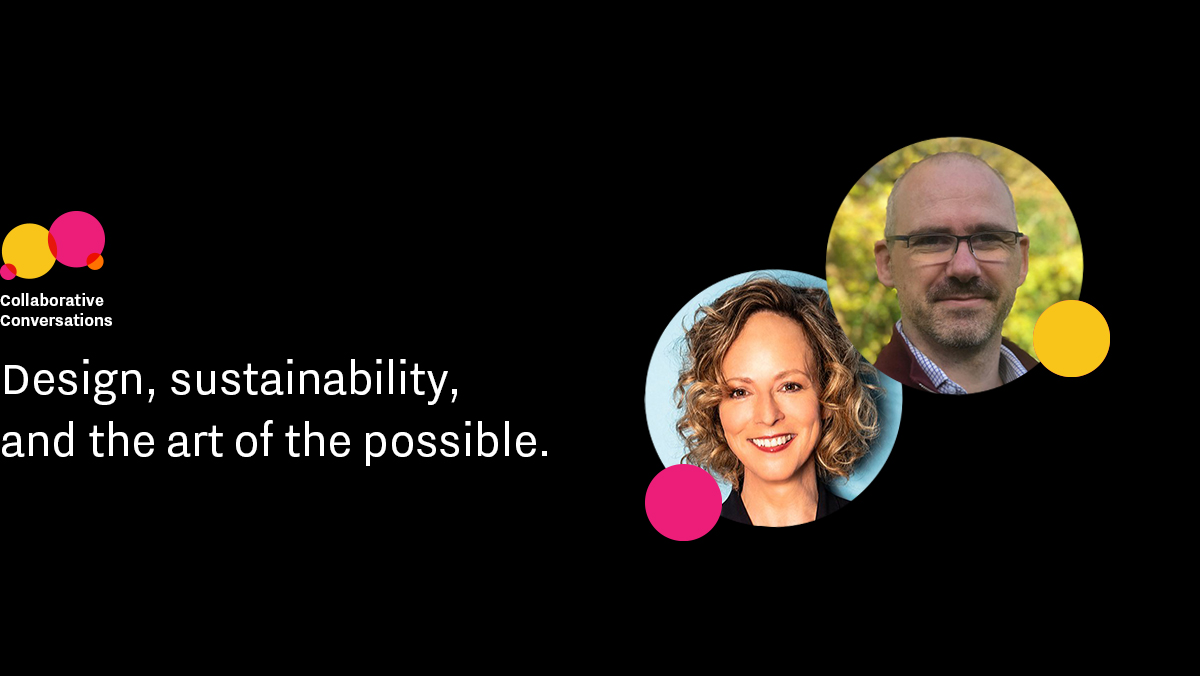Part two of a special two-part conversation (read part one here)
Experience designer and entrepreneur Anja Klüver ran Prospect, a Service Experience Consultancy and led and designed digital experiences for clients from Nokia to Toyota and all the way to 10 Downing Street. Dan Gray is a professional author and consultant who has worked on multiple continents for global consultancy EY, among others, written extensively on the future of sustainability, and is a visiting fellow at Ashridge Business School.
They joined GW+Co. founder and principal Gilmar Wendt for a special Collaborative Conversation on the roles and responsibilities of designers and consultants in the light of the latest synthesis report published by the IPCC (Intergovernmental Panel on Climate Change).
Gilmar: Crudely speaking, growth is one thing, profit is another. As a business owner, do I need to forfeit profit to be more equitable, or is that a false equation?
Dan: The honest answer is probably ‘yes’. And that’s a consequence of the fact that we need nothing short of transformation. Anything that isn’t transformation is tokenism, and there’s not a great deal of hope in another decade of tokenism. If we’re talking about moving on to a completely new S-curve, that inevitably requires a great deal of time, energy and investment, which in the short term would probably have a negative impact on profitability. But, again, this is the difference between short-term and long-term thinking. Over the long term you’re going to be making your organisation far more adaptable and resilient to the challenges and shocks that are coming down the pipeline. And it’s about thinking differently about profit. Maximising profit is not the raison d’etre for the business, it’s a means to an end. If you talk to any impact enterprise, they think about profit in two ways. One, it’s a measure of your financial sustainability. And two, it’s what provides you with the capacity to scale the impact of your business.
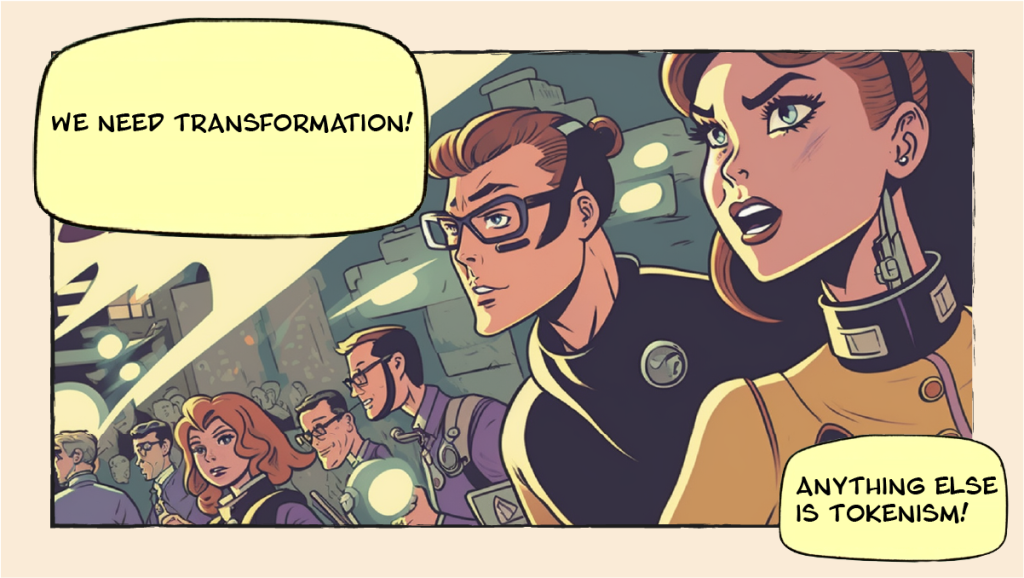
Anja: Let me start by responding to your earlier question, about how we need to talk to business stakeholders who may not share our mindset. I think on a day-to-day basis, especially for those of us with a lot of experience in doing new business generation, just selling design as a business problem-solving method is hard enough, let alone adding the need you to become a more sustainable company, or hit Net Zero, because our stakeholders are telling us to…”. Design has a unique power to solve complex, fundamental, world-changing problems. This is not to sound arrogant, but designers have the power to design a better future with positive impacts on people, planet, and business. We also have the power to completely fuck things up by designing shitty products and services generating huge carbon emissions, intentionally or unintentionally. A lot of designers – and I was there in the past – don’t think about these things until the harsh reality hits.
We have no time to mess around with nice aspirational, often greenwashing, mission statements. What mission statements now need to include is, ‘not ruining the environment’, because new generations entering the markets are more and more going to choose brands that ‘do good’. OK, plenty of people will continue to decide on price only and, one could argue, might not have better options. But even if we can’t convert the entire population overnight, we can change the mindset of business stakeholders, people we’re talking to every day. Transitioning to more sustainable business practices isn’t necessarily about pure cost. But it’s like any innovation, you need to invest to see results. Innovation doesn’t happen overnight, or with the flick of a switch, and all of a sudden the business is different. Take Tesla, where Elon Musk’s mission to design electric cars and self-driving cars has changed an entire industry. I’m not promoting Musk, by the way, but it’s a good example of how one company has adopted early research and innovated and created new market places, inspiring others to follow or be left behind. Governments followed by adopting electric vehicle policies, and financial incentives such as low-emission zones. This in turn spurred investment in battery technology, charging points and new services, paving the way for a new area of design, engineering, and service innovation.
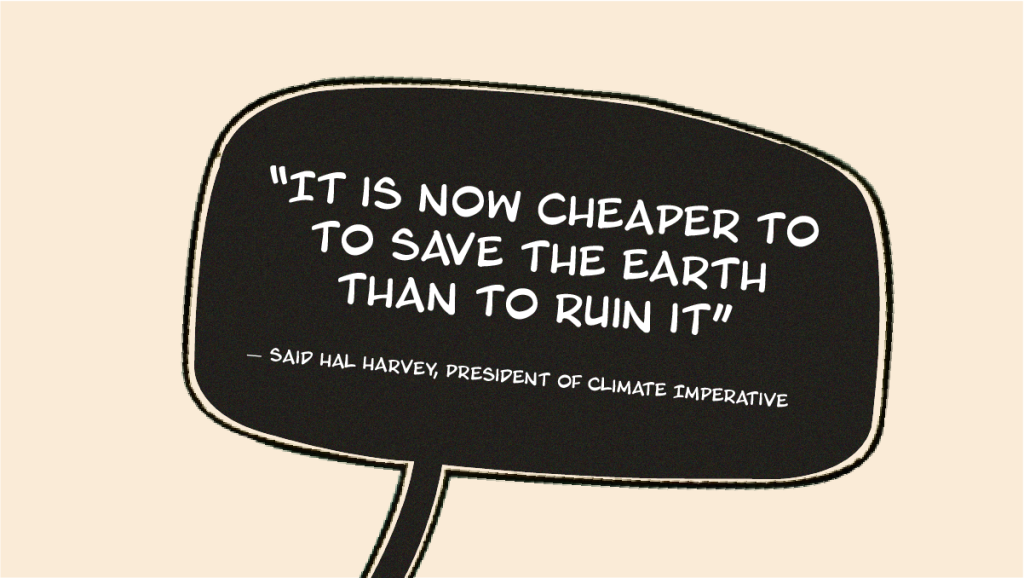
Dan: It’s a great example, because while the EV may be at the centre, as soon as you no longer have to drive to a filling station to fill up your car the entire system gets disrupted as well. It’s demonstrating the art of the possible. Going back to what we were saying about short term cost to the business to realise potentially longer term success, there’s a good example in Ørsted, the Danish energy company. It’s not that long ago, I think in the early to mid-2000s, they were pretty much a dirty energy company, with 85% power generated from non-renewables, 15% from renewables. They placed a big bet on offshore wind when that technology was still relatively immature, putting about two-thirds of their operating income at risk during the transition. Now they’re the world’s largest offshore wind provider and doing spectacularly well. It’s a textbook case of ‘future-back’ strategy. That means starting with the end in mind, by saying “if we’re shooting for Net Zero by 2050, what kind of business do we have to be to thrive in that environment?” And, reverse engineering back from that, “what would have to be true to make that possible?” It’s a completely different approach to strategy versus the way it’s normally done.
Gilmar: That’s what strategy ought to be – visionary, rather than planning the next three quarters or just focusing on achieving a growth plan. Anja talked about designing in the right way or the wrong way. Is there a mindset shift needed in the enabling professions, like design and consultancy? We talked about the rise of the activist consultant, but where do you start, as somebody who’s working in a profession that enables the future and, therefore, has a responsibility for which future you enable?
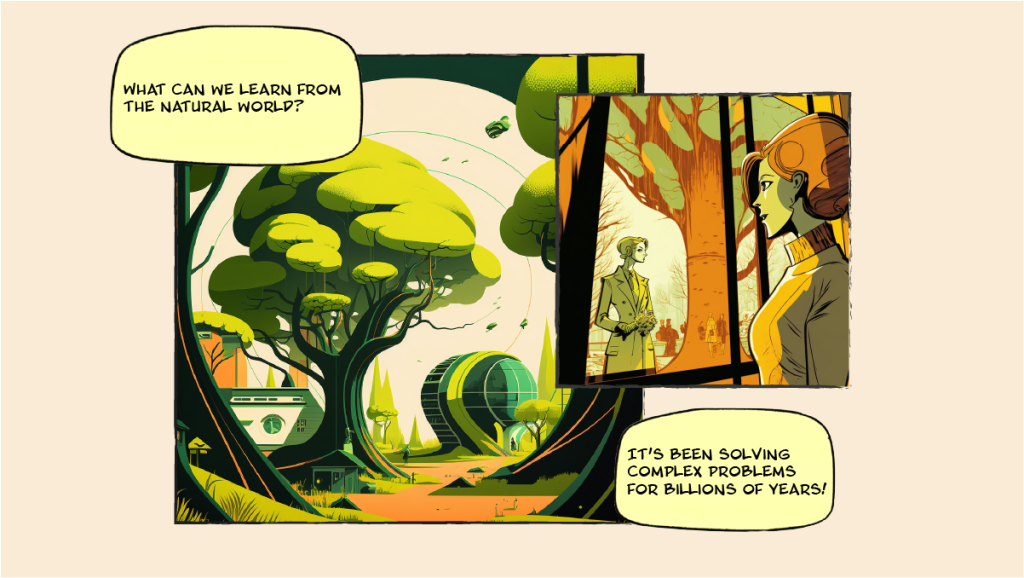
Dan: One of the things I took it upon myself to do early last year was a course on regenerative economics, run by the Capital Institute. The core theme is looking at and understanding universal principles of living systems, and how those principles could be applied to the design of human structures and institutions. If you look deeply into how the natural world works, and compare that to the sort of mental cage we’ve constructed for ourselves, it’s chalk and cheese. I could mention biomimicry, which is well known within the design profession, but there’s so much more that we could achieve by using the natural world as our guide. Janine Benyus, the US biologist who popularised the whole field of biomimicry, has a lovely line about “consciously emulating life’s genius”. I think there are two parts to that. First, having the humility to recognise, after 3.8 billion years of evolution, that the natural world has come up with some cracking ideas for how to solve complex challenges. And second, being truly intentional about learning from the natural world, understanding its particular biological functions and strategies, and how they might mirror ways in which we can solve our own design challenges.
Anja: I’d add to that not ignoring the natural world, because we can’t live without the natural world – we’re part of it. And yet, that’s what so many people seem to think. They’re like, “what, nature? Why do we need that?
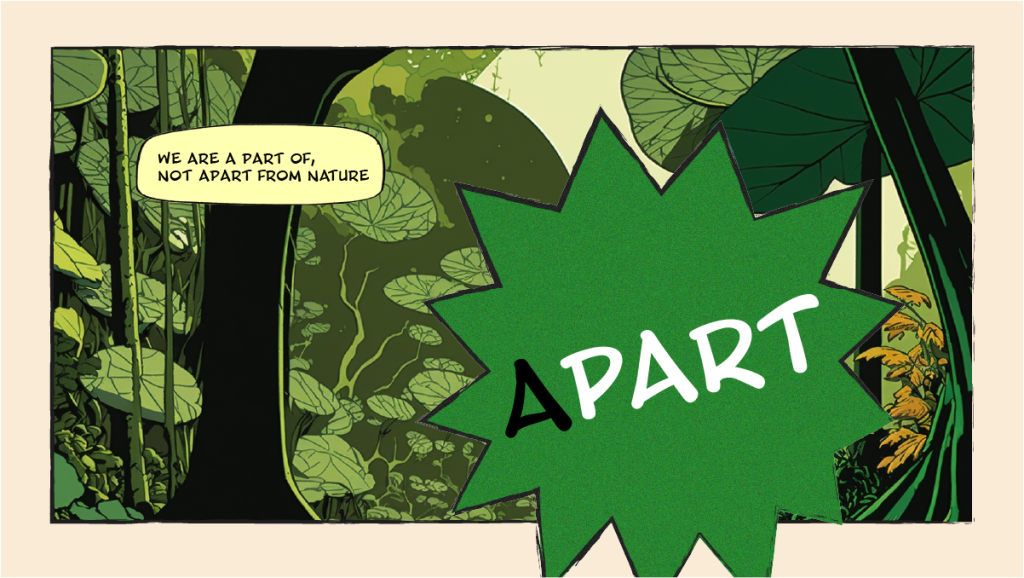
Dan: Well, not only can we not live without the natural world, we are the natural world. Rediscovering that we are part of, not apart from, nature is a major part of the mindset shift that needs to happen.
Anja: Absolutely. That’s why it’s so apt to ask what the responsibility of the activist consultant is.
Gilmar: Or the responsible designer. Let’s call it that.
Anja: The words are interesting, because they suggest that people who have an impact on sustainable outcomes are the uncomfortable disruptors of the world, campaigners who stick themselves to the M25 et cetera. It’s none of that. It’s actually making sense of business decisions, enabling businesses to make the right decisions in the first place by enabling them to see the impact they have on the environment. It’s also about the positive outcomes that can be generated by changing the way a business is run, how it designs products or delivers a service, or comes up with new ones. Our responsibility is to shape a positive future, to help businesses to opt in to that by making the decision to go on that journey. We can do this through prototyping, through designing scenarios, through helping businesses take a structured approach to decision-making in terms of which journey they take, which scenario they engage with.
For example, the idea of ‘light as a service’, which I know Gilmar was working on with Zumtobel Group, that’s a very interesting concept. You would no longer own light bulbs or buy light bulbs, you’d lease them and lease the service that delivers light. It’s a completely new concept for designing products and the services around them. That has other connotations the businesses involved need to be aware of. How does this get delivered to an organisation? How does it get returned back to the organisation? What new approaches will businesses need to engage with as a maintenance service? Our responsibility as designers is to help a business visualise the future, to understand how the future can be made a reality. And no single design discipline, let alone single designer, can do that on their own. The complexity of multiple physical, digital, environmental and human touch points requires multi-disciplinary collaboration and problem-solving.
Dan: It’s incumbent on anybody working in the professional services industry, in whatever guise, to ask themselves a fundamental question – are you following or are you leading client demand? I have a friend who tells a story of meeting up with a bigwig at one of the Big Four, and was told by said bigwig, “look, our job isn’t to make our clients believe in the science and what it means for how they need to transform their business model. Our job is to meet them where they’re at, and nudge them in the right direction. If you want to change the world, go and be an activist”. I thought that’s an extraordinary point of view to have. It’s offensive on so many levels, not least the idea that you’re comfortable monetising insufficient incremental change. It’s an insult to the client who’s coming to you as a consultant, because you’re supposed to be the expert, guiding them in developing appropriate strategies. It’s also dismissive of the cognitive dissonance many consultant friends of mine feel when they understand, on the one hand, the pace and scale of change that’s required, and on the other, they see the day-to-day reality of many of the client engagements they’re working on. It insults their intelligence to imagine they can’t see and feel that disconnect.
Gilmar: Where will this lead us? Because that cognitive dissonance can only grow stronger as the climate clock winds down, right?
Dan: There’s a lot of talk about regeneration, and now degrowth is cropping up much more in conversations. You can understand why people are saying that, because a paradigm shift is coming, one way or another. We will either be consciously and deliberately planning for it, for example, via degrowth, or it will happen as a consequence of our inaction, where ecological collapse renders the status quo impossible. The challenge for us, as consultants, is to find the people and businesses who already understand that, and help them and guide them through that process. There’s a limit to what we can do if we expend our time and energy trying to persuade people whose livelihoods depend on not being persuaded. There’s an old Bucky Fuller line – “You never change things by fighting the existing reality. To change something, build a new model that makes the existing model obsolete”. So, working with clients, and working across our professions, how can we be part of building a coalition of the willing to push that agenda forward and show there is a different way?
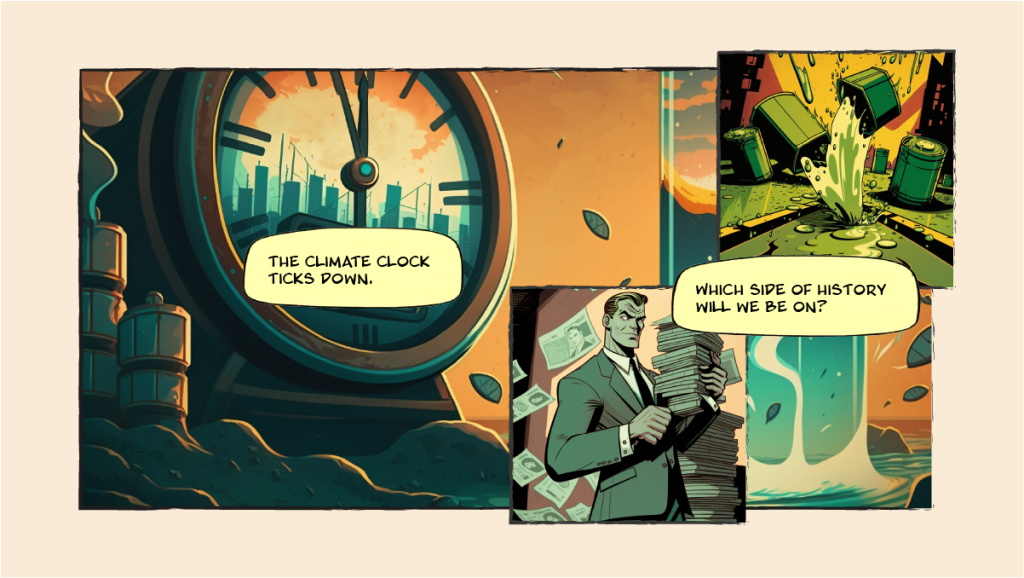
Anja: And a profitable way as well, because this is the problem, isn’t it? Businesses don’t want to lose their profit, stakeholders don’t want a negative end-of-year report, and shareholders don’t want to lose their dividends. At the same time, we need to enable companies to be future fit, and I’m calling it that because that’s what design does, creating the future way of engaging with the world and consuming products and services. We need to say to organisations, “let us help you become future fit, slowly but surely”. We shouldn’t have the arrogance to say, “here we are, we’re going to transform you into a sustainable business overnight”. That’s just bullshit. I am trying to figure out how to get into organisations in a way that takes them on a journey, rather than going in all guns blazing, claiming to know it all.
Dan: I’d go back to the word I mentioned a short while ago, humility. Anybody who walks into a client’s office and says, “I have the one right answer that is going to solve all of your problems”, quite frankly is lying.
Gilmar: But that’s the consultancy model, isn’t it?
Dan: Yes, but when you look at the natural world you begin to understand the self-sustaining and regenerative properties of living systems. A big part of that, true of any complex adaptive system, is appreciating how order and balance emerges from complexity. You have to let go of the illusion of predicting and controlling everything. Live with a question for longer. Focus on process. Instead of judging success or failure in terms of what you expected to happen, respond to what actually emerges from your interventions and interactions. It’s really a cultural thing, engaging in a continual process of exploration, experimentation and discovery. It’s a different way of seeing, being, and acting in the world.
Gilmar: What I’ve heard today is that we need to change the box, not just think outside the box, when it comes to growth and measuring everything with GDP. When you stop doing that, sustainability proves to be much better from every angle. It’s more efficient, and I like the fact that you’ve both talked about things which, even in ‘normal’ or conventional business terms, are desirable – be more profitable, be market-leading, have an edge in talent acquisition, have a future. All of these things make the case for sustainability, with the caveat that some of it will be painful, some of it is risky, and you can’t pin it on a 10-year plan and know exactly where you’re going to land. But you have to have flexibility and collaboration in order to embrace that opportunity.
Dan: One final thought about this phrase ‘consultant activist’. I think we all need to be activists now.
Anja: For me the word activist can be jarring. It’s about activists and change-makers working together. Unless we are making things happen, it’s all a lot of talk.
Dan: OK, we are all change-makers now. The alternative is that history will look upon us as having been complicit in perpetuating unsustainable business models. That’s the existential choice we all
face now. What side of history do we want to be on?
Anja: Obama’s quote is such a strong call to action – “We are the first generation to feel the
impact of climate change and the last generation that can do something about it.”
Gilmar: Fantastic, thank you so much, that was a fascinating and inspiring conversation. Thanks both for taking part.
What’s next?
Want to know more about GW+Co? Have a chat with Olivia
Have a strategic problem? Walk with Gilmar

